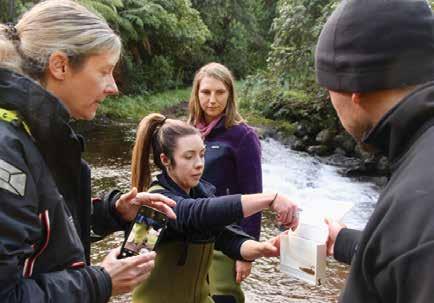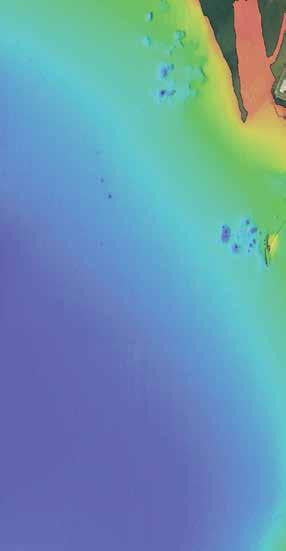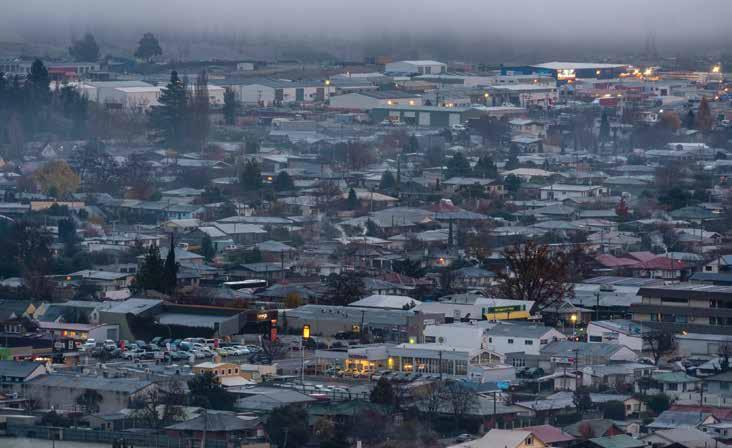
2 minute read
NEWS BRIEFS
Canyon Comeback
The Kaikōura Canyon seabed is showing remarkable signs of recovery after the devastating 2016 earthquake.
Advertisement
The 7.8 magnitude Kaikōura quake had a significant impact on New Zealand’s only deepsea marine reserve, with a complex flushing event sending sediment waves cascading down the canyon and wiping out many ecosystems.
However, ongoing post-quake surveys show remarkable resilience. In little over four years, many marine organisms had returned to the canyon floor, and there had been notable increases in fish and other species.
Marine biologists believe the active nature of the canyon makes for a resilient ecosystem and they predict the whole area will be fully recovered within another five years.
Mussel Up
Climate scientists have developed a new forecasting tool to help Marlborough’s Pelorus Sound mussel farmers predict how much meat their farms will produce.
The region dominates New Zealand’s mussel farm industry, which employs about 2,500 people and generates more than $200 million annually.

Climate and marine conditions strongly influence farm yield, and NIWA specialists have worked closely with the industry to pull together climate, marine and farm production information.
Using advanced data science, researchers have developed a webbased tool to enable farmers to forecast yield up to six months ahead.
The new tool will help farmers better plan industry productivity and harvest schedules.
SEA HORSES?
Fisheries scientists have solved a 10-year mystery surrounding the origins of cryptic markings found deep on the seafloor.
Researchers first noticed the horseshoe-shaped seabed imprints in 2013 when they were reviewing survey footage from the Chatham Rise.
The source of the deepsea 'hoof prints' remained a mystery until colleagues recently suggested the marks seemed shaped like the mouth of a rattail – a species of deepsea fish, also known as grenadier.
Overlaying rattail images on the markings revealed the imprints are most likely to be made by fish feeding on seafloor inhabitants.
As well as resolving a long-running puzzle, the discovery will help fisheries scientists pinpoint rattail feeding grounds.
Clear Passage
NIWA has started a series of workshops with regional councils and iwi to help local authorities develop fish passage action plans for their region. With three-quarters of our native freshwater fish species under threat, legislation requires any new structure put across rivers or streams to be designed to enable fish to get past.
Councils must now actively develop plans to encourage fish passage, and NIWA freshwater scientists are running workshops across the country to provide the necessary advice to landowners.

The workshops, which include additional specialists from Australia, involve a mixture of theory, practical design and site visits to explore case studies.
Underwater Water
NIWA marine researchers have used acoustic soundings, remotely operated vehicles and seafloor sampling techniques to help map Wellington’s Waiwhetū Aquifer.

The large freshwater aquifer runs deep under the Hutt Valley and continues beneath Wellington Harbour’s seafloor. It is recognised as a crucial alternative water source for the quake-prone capital.
To bypass costly underwater drilling programmes to map the extent of the aquifer, scientists used a range of new techniques to accurately identify freshwater springs across the harbour floor.
These methods can now be replicated to investigate other large freshwater aquifers found off the Marlborough, Canterbury and Hawke's Bay coasts.
Air Quality
A new study has mapped the outdoor winter air quality for Invercargill and Alexandra in more detail than ever before.

The major cause of health hazards was smoke from domestic fires. Researchers, using atmospheric sensors, found that air in the most polluted locations contained three times as much particulate matter as the air in the least polluted areas. Wind patterns and geography meant low lying suburbs were most susceptible to pollution build up.
Trials also showed domestic air filtration units could help reduce pollution levels indoors by up to 90 percent.








